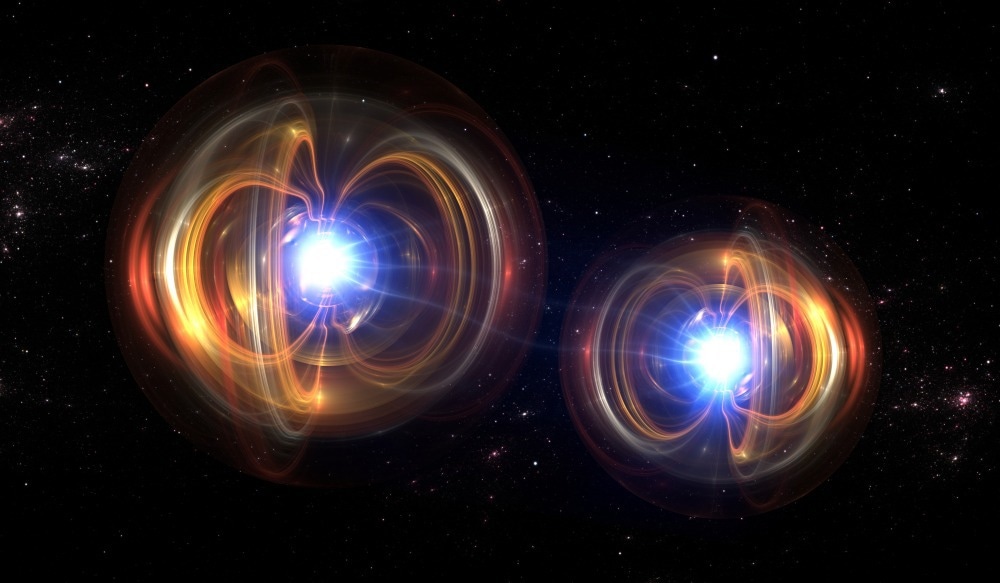In a recently published article in the journal Quantum Information, researchers have presented a smart quantum camera for super-resolving image analysis that uses the self-learning capabilities of machine learning to recognize the statistical variability of unknown mixtures of light sources at each pixel.
 Study: Smart quantum statistical imaging beyond the Abbe-Rayleigh criterion. Image Credit: Jurik Peter/Shutterstock.com
Study: Smart quantum statistical imaging beyond the Abbe-Rayleigh criterion. Image Credit: Jurik Peter/Shutterstock.com
The wave nature of light constrains optical imaging resolution. The Abbe-Rayleigh criteria have been used to evaluate the spatial resolution limitations of imaging devices for a century. Recently, there has been increased interest in using spatial projective measures to improve the resolution of imaging devices. Unfortunately, these techniques need prior knowledge of the coherence qualities of "unknown" light beams and incur rigorous alignment requirements.
The recent study was made possible by a universal quantum model that permits the development of deep neural networks for identifying photon fluctuations. The suggested protocol overcomes the constraints of current super-resolution algorithms based on spatial mode projections, offering new microscopy techniques, satellite imagery, and astronomy techniques.
Significance of Phase Information in Quantum Measurements
For over a century, the value of phase over amplitude information has established optical engineers' knowledge.
Recently, this topic has been widely examined in the context of quantum measurements. Phase information can be used to transcend the Abbe-Rayleigh resolving limit for the spatial identification of visible light. For example, phase information may be retrieved by mode decomposition by employing projective observations or demodulation of spatial modes.
These techniques need prior information on the coherence qualities of the ‘unknown’ light sources. Furthermore, these approaches put rigorous constraints on imaging equipment's aligning and focusing conditions. Despite these constraints, most, if not all, of the existing experimental techniques have depended on spatial projections and demodulation in the Hermite-Gaussian, Laguerre-Gaussian, and parity basis.
Smart Quantum Camera to Enhance Imaging Resolution Limit
Photon quantum variations determine the characteristics of light sources. In this study, Bhusal et al. demonstrated that evaluations of the quantum statistical characteristics of a light field enable imaging that exceeds the Abbe-Rayleigh resolution limit.
The statistical fluctuations of photon combinations are identified using the self-learning capabilities of artificial intelligence.
Researchers developed a quantum camera capable of identifying the photon statistics of each pixel. For this objective, they created a generic quantum model that represents the photon statistics resulting from the scattering of any combination of light sources. This approach develops and trains artificial neural networks for light source recognition.
Due to this remarkable approach, researchers could overcome the fundamental constraints of conventional super-resolution procedures based on spatial mode projections and multiplexing.
How Does the Smart Quantum Camera Work?
This camera employs an artificial neural network to determine the photon characteristics of each point source constituting an area of interest.
Using a broad model based on Sudarshan and Glauber's quantum theory of optical coherence, it is possible to describe the photon statistics generated by the scattering of an irrational number of light sources.
Conducting photon-number-resolving detection enables this unique characteristic. According to the Heisenberg uncertainty principle, this camera's sensitivity is limited by photon fluctuations and not by the Abbe-Rayleigh resolution limit.
Quantum Camera Research Findings
Using a continuous-wave laser at 633 nm, the researchers showed their proof-of-concept quantum camera by producing coherent or incoherent superpositions of distinct, indistinct, or partly discernible light sources.
Based on the detection of photon statistics, they presented a quantitative description of the super-resolving imaging technique. The researchers proved that the smart camera for super-resolving image analysis can detect small spatial details with higher resolution than standard direct imaging approaches.
The smart camera made it possible to accomplish imaging beyond the Abbe-Rayleigh criteria. Across one instance, researchers detected a superposition of somewhat identifiable sources in different trials. Separated by 2.55 mm, one coherent and one thermal light source were used to produce the superposition.
The transverse separation is computed using a similar method. Even under diffraction-limited circumstances, the suggested camera resolved the spatial characteristics of sources with close proximity.
As anticipated for greater separation distances, the smart camera's performance matches the precision of intensity measurements. In addition, the smart camera surpasses direct imaging when the distance between objects decreases.
The Future of the Quantum Camera
Bhusal et al. developed a quantum camera that exceeds the Abbe-Rayleigh resolution limit for super-resolution imaging.
Utilizing the self-learning capabilities of artificial intelligence, their approach for quantum statistical imaging identifies the statistical fluctuations of totally unknown mixes of light sources.
This system component depends on a broad model derived from the theory of quantum coherence to explain the photon statistics induced by the dispersion of any number of light sources.
While the performance of the smart camera in terms of resolution is comparable to conventional super-resolution schemes, the researchers indicated that quantifying the quantum statistical fluctuations of photons allows circumventing the inherent drawbacks of current super-resolution protocols related to spatial mode projections.
In particular, the technique does not need prior knowledge of the coherence qualities of the light field. In addition, it does not depend on information from the sources' specific centroids. This discovery will likely create a paradigm in optical imaging, with significant consequences for microscopy, satellite imagery, and astronomy.
Reference
Bhusal, N., Hong, M., Miller, A., Quiroz-Juárez, M. A., León-Montiel, R. de J., You, C., & Magaña-Loaiza, O. S. (2022). Smart quantum statistical imaging beyond the Abbe-Rayleigh criterion. Npj Quantum Information, 8(1), 1–8. https://www.nature.com/articles/s41534-022-00593-5
Disclaimer: The views expressed here are those of the author expressed in their private capacity and do not necessarily represent the views of AZoM.com Limited T/A AZoNetwork the owner and operator of this website. This disclaimer forms part of the Terms and conditions of use of this website.